Genu Valgum
What is Genu Valgum?
Genu Valgum is a Latin word which is commonly known as “Knocked-knee” deformity. It causes the knees angle in and touches one another. In a severe case of knocked knee are one is unable to touch their feet together. Mainly it is seen in children from 2 to 5 years.
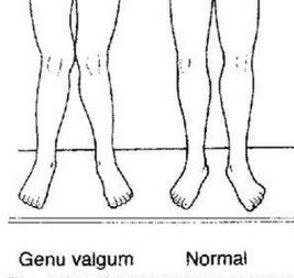
Generally it heals as the child grows up but in some severe cases it can worsen such as if it is caused by any disease like rickets or obesity. Genu valgum is a harmless condition that will eventually clear up on its own. When and where treatment is required, the results generally are satisfactory without any long term issues to worry about. To say in the medical terms distal femur is the most common area where Genu Valgum can occur, but it can arise from tibia as well.
Types
The types of the Genu Valgum differ on the characteristics and symptoms. This is one of the diseases or issues that are recognized and classified by the characteristics rather than severity. However, the severity has a larger role to play in the treatment of the disease.
Bilateral Genu Valgum
Both the knees start to bend towards each other and touches each other.
Unilateral Genu Valgum
One knee starts to bend toward another when the other one stays normal.
Anatomy
A disease or problem is better understood with the detailed anatomy. The human body is very complex and have plenty of things associated with the single thing. It is therefore very important to understand the anatomy of the human body to know about the disease.
Genu Valgum is often described and explained as the pathological conditions developed by the bones, ligaments, joint bones and muscles. However, that is not the entire anatomy of the Genu Valgum. The disease takes place due to the abnormal and non-equivalent growth of the outer condyle and the inner condyle. It has been noted that the growth of the inner condyle is always more than the external one and that raises the problem for Genu Valgum or Knocked Knee.
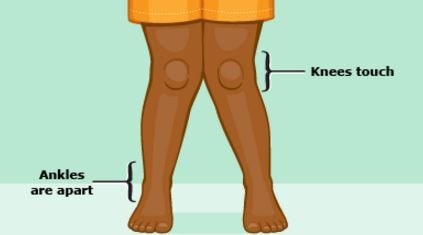
Here are some of the physiologic process of Genu Valgum that describe the Anatomy even more.
- Between 2-3 years of age children have up to 20 degree bend.
- In rare occasions, it gets worse after 7 years of age.
- After age, 7 valgus should not be worse than 12 degrees of genu valgum.
Etiology
Generally infants have bowlegs because they of staying in mother’s womb for a long time. The legs generally begin to get straight once they learn to walk. Knocked knee can affect a child at 3 years of age causing their knees to touch, but the ankles are apart.
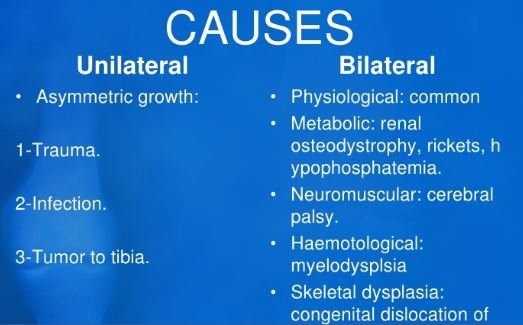
This is a normal process by which knocked knee can occur. But knocked knee can develop as a result of medical problem or disease such as –
- Shinbone injury.
- Bone infection commonly known as Osteomyelitis.
- Obesity.
- Lack of vitamin D especially because of rickets.
Diagnosis
The severity or degree of genu valgum can be estimated by Q angle. For women, the Q angle should be less than 22 degrees while the knee is extended and less than 9 degrees with the knee at 90 degrees of flexion. For men, Q angle should be less than 18 degrees while the knee is extended and less than 8 degrees with the knee in 90 degrees of flexion. A normal Q angle for men and women is 12 degrees and 17 degrees respectively.
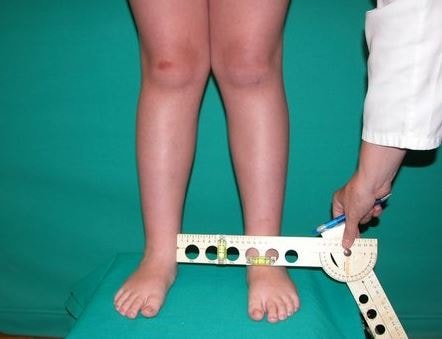
Exercises
Genu Valgum is better treated with the Physiotherapy approach. Exercises are very useful for the disease and give the patient immense relaxation and comfort. There are many exercises that can bring relief to the patient apart from the slow mobilization of the knee. However, the exercise has no role with the treatment. It can be practiced alongside treatment and even before or after treatment.
- Strengthening exercises for the quadriceps, hamstrings, and muscles.
- Balancing exercises to walk.
- Weight Transferring
Apart from all these, heat therapies can also be used for some pain relief.
Treatment
Adults with untreated Genu Valgum are injury prone and have chronic knee problems such as Chondromalacia and Osteoarthritis which causes severe pain and problems in walking.
It is normal for children to have knocked knees between the ages of two and five years of age and almost all recover from this as the child grows older.
There are both non operative and operative ways to treat Genu Valgum depending on the severity.
If symptoms are prolonged doctors often use orthotic shoes or leg braces at night to gently move a child’s leg back into position. If the condition persists and worsens later in life, surgery is required to get rid of knocked knee. Available surgical procedures include adjustments to the lower femur and total knee replacement (TKR), Hemi epiphysiodesis or physeal tethering (staples, screws, or plate/screws) of medial side.
Sometimes the malformation of bone, causing knocked knees can be traced to a lack of nutrition required for bone growth, which can cause conditions such as rickets (lack of bone nutrients, especially vitamin D and calcium), or scurvy (lack of vitamin C). The treatment of the underlying vitamin deficiency may restore a progression of bone growth.
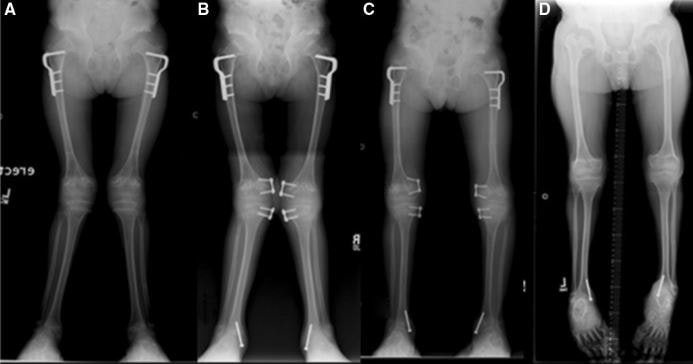
Prognosis
Complications like difficulty in walking though it is very rare, arthritis, rickets, scurvy and troubled physical appearance etc.
However, there is no precaution that can be taken to prevent genu valgum. Intake of enough vitamin D and C can protect your bones but does not guarantee anything. It is quite common in babies. It gets cured with time as the baby grows up.
Referenes
- http://www.physiotherapy-treatment.com/genu-valgum.html
- http://www.ncbi.nlm.nih.gov/pmc/articles/PMC1309897/?page=1
- http://emedicine.medscape.com/article/1259772-overview
- http://www.orthobullets.com/pediatrics/4052/genu-valgum-knocked-knees
- https://www.nlm.nih.gov/medlineplus/ency/article/001263.htm
- http://learnpediatrics.com/body-systems/musculoskeletal-system/knock-kneed-children/
- http://svnirtar.nic.in/sites/default/files/resourcebook/3._Genuvalgum-Dr_P_K_Sahoo.pdf
- http://www.nationwidechildrens.org/knock-knees
